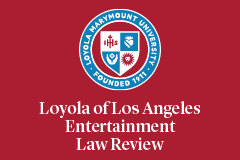Abstract
In February 2020, the Ninth Circuit held that YouTube, as a private entity, does not have to provide First Amendment protections to its content creators. The holding was not surprising or groundbreaking, but the case served as catalyst in the discussion of how platforms should moderate content. This was further amplified when over the summer, Twitter started to add warnings under some of President Donald Trump’s tweets. In response, the President called to “REVOKE 230.”
“230” refers to Section 230 of the Communications Decency Act. At a high level, Section 230 allows platforms to moderate content at their discretion without fear of liability. But today, platforms dominate much of the national discourse and heavily influence politics and government. This Note explores the role of Section 230 in today’s social media-dominated world and critiques the recent push to regulate Section 230. This Note argues that the First Amendment and government intervention are ineffective and dangerous tools in Section 230 regulation. Instead, this Note proposes a collaborative industry-government approach that balances on the needs of social media platforms, government, users, and content creators.
Recommended Citation
Yeva Mikaelyan,
Reimagining Content Moderation: Section 230 and the Path to Industry-Government Cooperation,
41 Loy. L.A. Ent. L. Rev. 179
(2021).
Available at: https://digitalcommons.lmu.edu/elr/vol41/iss2/3


